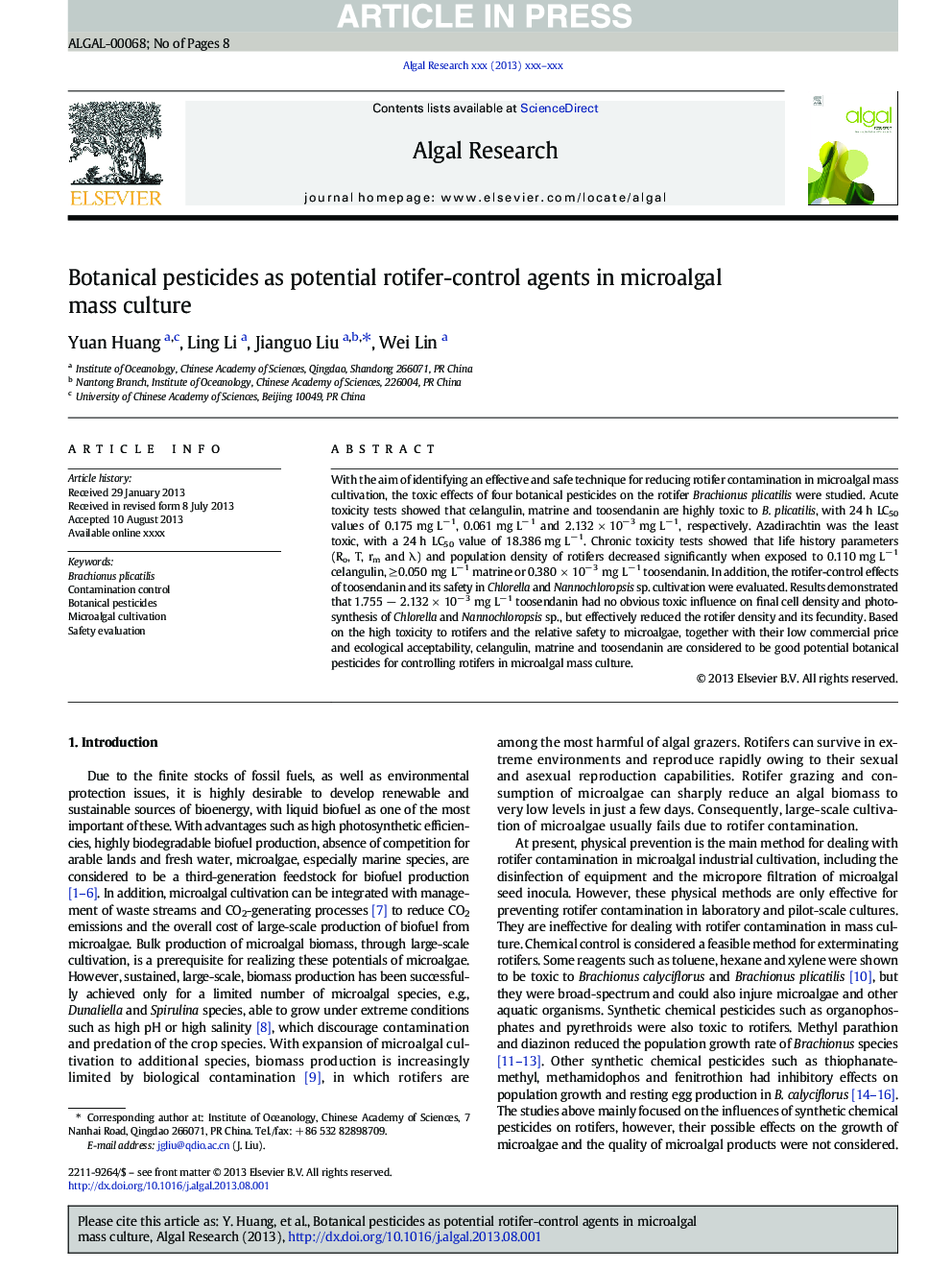| Article ID | Journal | Published Year | Pages | File Type |
|---|---|---|---|---|
| 8088475 | Algal Research | 2014 | 8 Pages |
Abstract
With the aim of identifying an effective and safe technique for reducing rotifer contamination in microalgal mass cultivation, the toxic effects of four botanical pesticides on the rotifer Brachionus plicatilis were studied. Acute toxicity tests showed that celangulin, matrine and toosendanin are highly toxic to B. plicatilis, with 24 h LC50 values of 0.175 mg Lâ 1, 0.061 mg Lâ 1 and 2.132 Ã 10â 3 mg Lâ 1, respectively. Azadirachtin was the least toxic, with a 24 h LC50 value of 18.386 mg Lâ 1. Chronic toxicity tests showed that life history parameters (Ro, T, rm and λ) and population density of rotifers decreased significantly when exposed to 0.110 mg Lâ 1 celangulin, â¥Â 0.050 mg Lâ 1 matrine or 0.380 Ã 10â 3 mg Lâ 1 toosendanin. In addition, the rotifer-control effects of toosendanin and its safety in Chlorella and Nannochloropsis sp. cultivation were evaluated. Results demonstrated that 1.755 â 2.132 Ã 10â 3 mg Lâ 1 toosendanin had no obvious toxic influence on final cell density and photosynthesis of Chlorella and Nannochloropsis sp., but effectively reduced the rotifer density and its fecundity. Based on the high toxicity to rotifers and the relative safety to microalgae, together with their low commercial price and ecological acceptability, celangulin, matrine and toosendanin are considered to be good potential botanical pesticides for controlling rotifers in microalgal mass culture.
Keywords
Related Topics
Physical Sciences and Engineering
Energy
Renewable Energy, Sustainability and the Environment
Authors
Yuan Huang, Ling Li, Jianguo Liu, Wei Lin,
